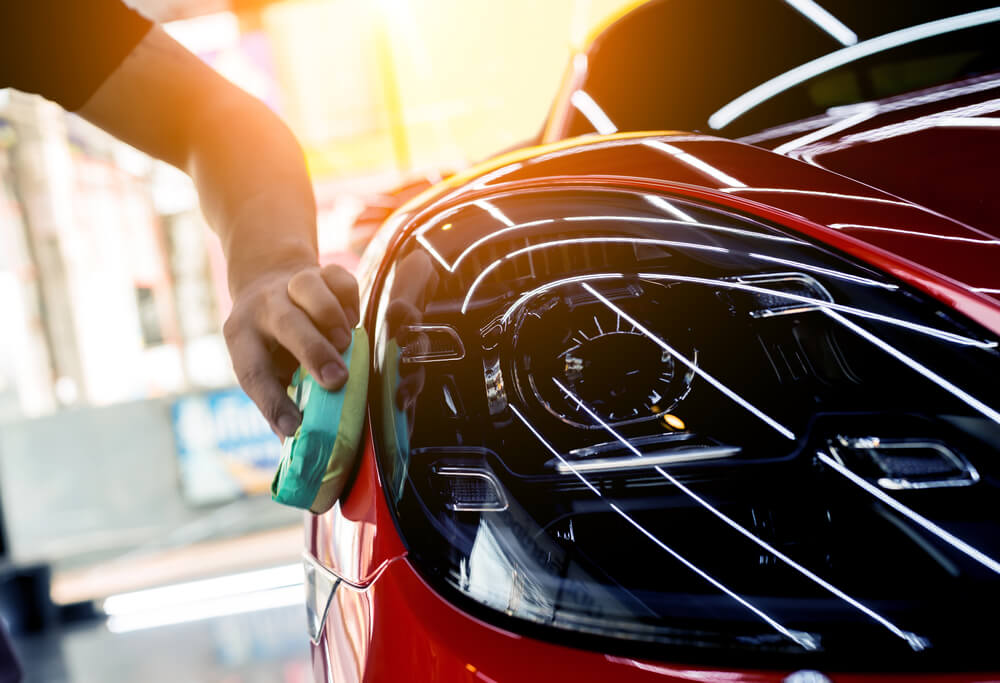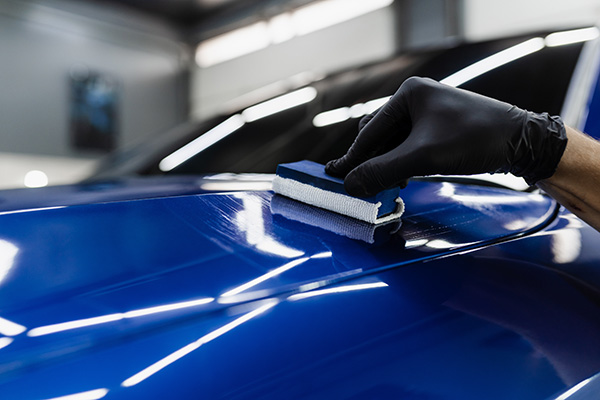Comprehending the Science Behind Ceramic Coating for Enhanced Automobile Sturdiness
The science of ceramic finish is reinventing car upkeep by providing an awesome shield against severe environmental factors. At its core, this modern technology utilizes the power of silicon dioxide and titanium dioxide to develop a resilient, protective layer. However just what makes these compounds so efficient in protecting an automobile's outside? As we check out the complex structure and application procedure of ceramic layers, we uncover the keys behind their remarkable defense and longevity. Exactly how does this compare to typical methods, and what effects does it have for vehicle maintenance in the lengthy term? The responses might surprise you.

Composition of Ceramic Coatings
Ceramic finishes are mostly made up of silicon dioxide (SiO2), which is obtained from all-natural products like quartz and sand. This compound forms the foundation of the finish, providing its particular firmness and resistance to ecological elements. In addition to SiO2, ceramic layers typically include titanium dioxide (TiO2) for boosted UV defense and enhanced resistance to toxic wastes. These nanocomposite materials produce a durable, chemical bond with the car's surface area, supplying an enduring protective layer.
The formula of ceramic layers is a meticulous procedure where the concentration of SiO2 can substantially affect the layer's performance. Higher SiO2 web content typically results in greater sturdiness and firmness, adding to the covering's capability to withstand scrapes and chemical etching. The balance of elements is crucial; too much SiO2 can make the coating brittle, while also little can compromise its protective residential or commercial properties.
Producers may additionally incorporate extra materials, such as polysilazane, to boost versatility and simplicity of application. These additives boost the finish's hydrophobic residential or commercial properties, guaranteeing water and contaminants grain off the surface easily. This engineered composition emphasizes the efficiency of ceramic layers in securing a car's exterior against a variety of adverse problems.
Application Process Clarified
Applying a ceramic finish to an automobile involves numerous important steps, each vital to guaranteeing optimal attachment and performance of the safety layer - ceramic coating. The process starts with a complete laundry and decontamination of the automobile's surface to eliminate dirt, gunk, and previous waxes or sealants. This action is crucial as any type of pollutants left on the surface area can hinder the covering's ability to bond successfully
Complying with the first cleaning, the next action entails polishing the lorry to eliminate any type of blemishes, such as swirl marks or scratches. Polishing guarantees a smooth surface, which is crucial for the finish to adhere correctly and give a consistent finish. After brightening, a surface area prep work spray is made use of to get rid of any kind of staying deposits and guarantee that the surface area is entirely clean.

Safety Benefits
Typically hailed for its remarkable safety top qualities, a ceramic layer provides various advantages that substantially boost car resilience. At its core, ceramic coating creates a hard, semi-permanent barrier over an automobile's exterior, which works as a shield against different ecological dangers. This sophisticated layer of protection effectively defends against UV rays, oxidation, and fading, maintaining the automobile's original paint and shine. It minimizes the risks postured by damaging contaminants such as bird droppings, tree sap, and roadway crud, which, if left without treatment, can result in irreversible damages.
In addition, ceramic finishes exhibit hydrophobic residential properties, meaning they push back water and help with a self-cleaning impact. This feature reduces the adherence of dirt and mud, simplifying upkeep and cleaning processes. The finish's resistance to chemical etching better ensures that the car's surface remains unblemished in spite of direct exposure to harsh cleaner and pollutants.
In addition to these safety benefits, the ceramic covering improves a car's aesthetic charm by producing a glossy surface that highlights shade depth and clearness. This not only sustains the car's visual appeal but also adds to its lasting worth by maintaining the integrity of its outside with time.
Contrasting to Standard Techniques
Unlike standard techniques of vehicle protection, such as shaving or sealers, ceramic finishes use a more long-lasting and sturdy option. Where waxes and sealants generally provide a short-term layer of protection, often calling for reapplication every couple of months, ceramic coverings create a semi-permanent bond with the lorry's paint. This bond develops a protective layer that is resistant to ecological pollutants, UV damages, and small abrasions.
Traditional waxes are primarily made up of natural parts like carnauba wax, supplying a glossy coating visit here yet doing not have the robust safety high qualities of ceramic coverings. Sealers, while synthetic and offering somewhat better durability than waxes, still drop short in contrast to the resilience and chemical resistance of ceramic coatings. The innovative innovation of ceramic coatings includes nanotechnology, which allows them to fill out microscopic blemishes in the paint surface, causing a smoother and much more hydrophobic coating.
In terms of application, ceramic finishes require an even more meticulous process, commonly necessitating specialist installation to ensure optimum performance. This contrasts with the fairly uncomplicated application of waxes and sealants, which can be used in your home. The exceptional protection and aesthetic improvement provided by ceramic finishings warrant the financial investment for those seeking lasting vehicle preservation.
Durability and Maintenance
Just how does the long life of ceramic coatings equate right into convenience of upkeep for lorry owners? The advanced formulation of ceramic finishings gives a durable safety layer on the lorry's surface area, which significantly extends the lifespan of the automobile's outside surface. This toughness suggests that the coating acts as a guard versus ecological impurities such as UV rays, bird droppings, and roadway gunk, which can or else deteriorate paintwork in time. Consequently, automobiles coated with ceramic items call for less regular cleaning and detailing efforts, thereby reducing upkeep time and expenses for owners.
Furthermore, the hydrophobic nature of ceramic finishes allows water and other fluids to bead up and roll off the surface area, bring dirt and debris with them. This home minimizes the buildup of pollutants, making regular cleaning more reliable and less labor-intensive. Proprietors gain from a consistently smooth, shiny appearance with minimal initiative. While the covering itself is durable, it is not entirely maintenance-free. Normal evaluations for damages and occasional reapplication are suggested to ensure the protective layer continues to be intact. Thus, ceramic layers provide an important balance in between long-lasting resilience and streamlined upkeep for car treatment.
Conclusion
Ceramic coverings, with their sophisticated chemical structure of silicon dioxide and titanium dioxide, offer a formidable obstacle against environmental damage, considerably improving car sturdiness. The hydrophobic buildings advertise self-cleaning, lowering upkeep initiatives and protecting aesthetic appeal. When contrasted to traditional methods, ceramic coatings supply premium security against UV rays, oxidation, and chemical etching. This technology expands the life-span of lorry exteriors, making it an innovative solution for lasting preservation and minimal upkeep.
The formulation of ceramic coatings is a careful process where the focus of SiO2 can dramatically influence the coating's efficiency.Applying a ceramic layer to a car entails a number of essential steps, each crucial to making certain optimum bond and efficiency of the protective layer.Commonly hailed for its remarkable safety qualities, a ceramic coating supplies numerous benefits that dramatically enhance car longevity. The advanced formula of Clicking Here ceramic coatings offers a hop over to these guys durable safety layer on the vehicle's surface, which considerably expands the life expectancy of the auto's exterior finish.Ceramic finishings, with their innovative chemical make-up of silicon dioxide and titanium dioxide, provide a powerful obstacle versus ecological damages, significantly enhancing car sturdiness.
Comments on “Leading Reasons to Invest in Professional Ceramic Coating for Your Vehicle”